



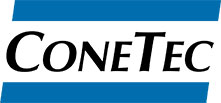
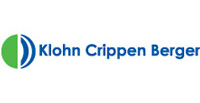
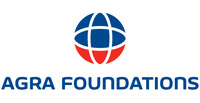
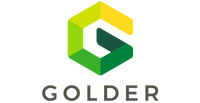

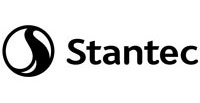
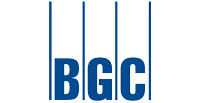
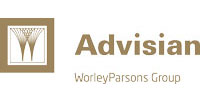

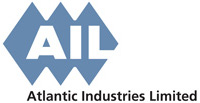

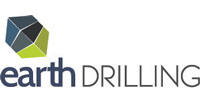
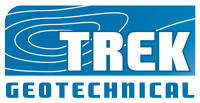
Keynote Speakers
2018 Darcy Lecture (IAH) - Masaki Hayashi
Alpine Hydrogeology: The Critical Role of Groundwater in Sourcing the Headwaters of the World
Many of us have been awed by the stunningly beautiful view of alpine lakes and streams—and they are not just beautiful. Nearly half of the world's population relies on rivers originating in high mountains for water supply. Source areas of mountain streams have rugged topography with sparse soil and vegetation covers, and were once considered "Teflon basins" that have minimum capacity to store groundwater. Over the past decade or so, a new understanding of alpine hydrogeology has been emerging based on detailed field observations around the world. Alpine basins actually have important aquifer units that provide temporary storage of rain and meltwaters from snowpack and glaciers. Gradual release of water from these aquifers sustains streamflow during dry or cold periods, and is critically important for water supply and aquatic habitats in downstream regions. Due to rugged terrain and severely limited vehicle access, alpine hydrogeologists need to rely on creative methods to investigate groundwater, such as geophysical imaging techniques or observation of surface water/groundwater interaction. This lecture will demonstrate how we can gain valuable insights into groundwater in challenging environments and develop a conceptual understanding of hydrological systems. These ideas and approaches will have broad applicability in a variety of environments, where hydrogeologists are faced with challenging conditions.

Masaki Hayashi, Ph.D., is a professor in the Department of Geoscience at the University of Calgary. He holds the Canada Research Chair in Physical Hydrology. Hayashi received his B.S. and M.S. in earth sciences from Waseda University and Chiba University, respectively, in Japan, and his Ph.D. in earth sciences from the University of Waterloo in Canada. His main research interests are in the connection among groundwater, surface water, and atmospheric moisture in various environments ranging from the prairies to the mountains.
R.M. Hardy Keynote Address (CGS) – Dr. C. Derek Martin
Ground Hazards and Canadian Railway Operations
Canada currently has the third largest railway network in the world, at approximately 48 000 route kilometres of track. This transcontinental freight railway network was initiated in 1885 with the opening of the Canadian Pacific Railway, and the bulk of it was completed by the 1950s. Consequently, the operation and maintenance of the network has evolved as Canada has grown. Canada's railways have been exposed to ground hazards since the first transcontinental line was constructed. The earliest record of these ground hazards was reported by Stanton (1898) in "The Great Land-Slides on the Canadian Pacific Railway in British Columbia".
As with many linear corridors, ground hazards are often repetitive geographically with a defined temporal and spatial frequency. Historically, Canadian railways have relied upon experience and subjective assessment for hazard management. With increasing demands from society, the management of hazards that impact operations have evolved from a reactive mode to a proactive management philosophy. Keegan (2007) provided a classification system for ground hazards encountered along the Canadian railway network and proposed a risk analysis methodology for managing these hazards. Today, Transport Canada requires formal risk assessments of rail corridors that are used to transport Dangerous Goods. Transport Canada identified that ground hazards must be included in the risk analysis of these "key routes". Consequently, formal risk analyses, as with many other industries, are now part of today's railway operations.
This lecture will review the historical management of ground hazards by the railway industry and explore options available within the framework of current risk management strategies. The application of consequential risk analysis linked to the performance demands of modern freight railway operations will also be reviewed.

Dr. Martin, PGeol, PEng., started his career in 1972 and has over 45 years of experience in geotechnical engineering associated with dams, slopes and tunnels. He holds a BSc in geology, and a Masters of Engineering and a PhD in Geotechnical Engineering. His early years were spent on construction sites for major Canadian hydroelectric projects. In 1987 he joined AECL, where he directed the geomechanics research at the Underground Research Laboratory in southeastern Manitoba and was senior adviser to the Director of the Canadian Nuclear Fuel Waste Management Program. From 1995-1999 he served as Associate Director of the Geomechanics Research Centre at Laurentian University, working on the deep mining projects in the Sudbury basin. Since 2000 Dr. Martin has been Professor in Geotechnical Engineering at the University of Alberta, and from 2003 to 2013 he led the Railway Ground Hazards Research Program at the University of Alberta. Since 2013 he has served as Director of the Canadian Rail Research Laboratory and currently holds an NSERC Industrial Research Chair in Railway Geomechanics.
Between 2005-2007 Dr. Martin served as Vice-President Technical for the Canadian Geotechnical Society and from 2007-2011 he served as ISRM Vice-President for North America. He has authored over 300 technical papers on geotechnical engineering and is a Fellow of the Engineering Institute of Canada and a Fellow of the Canadian Academy of Engineering.
CGS Colloquium – Matt Lato
Leveraging Three-Dimensional Remote Sensing in Geotechnical Engineering

Matt Lato is a Senior Engineer at BGC Engineering based in Ottawa, Ontario. His technical expertise is in the application of 3-dimensional remote sensing in geotechnical engineering. Matt is the lead author of the Site Investigation, Analysis, Monitoring and Treatment chapter of the Canadian Technical Guidelines and Best Practices related to Landslides, and an author or co-author of over 100 journal and conference papers. He is an Adjunct Professor in the Department of Geological Sciences and Geological Engineering at Queen's University, and an Affiliate Faculty Member in the Department of Geology and Geological Engineering at the Colorado School of Mines.


